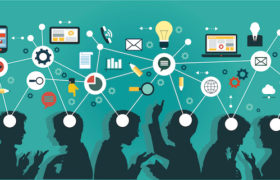First of all, what is a learning organization anyway?
A learning organization is a one that provides and embraces an environment where continuous learning and improvement is ingrained in its culture, leadership, and overall day-to-day operations. The idea was first introduced by Peter Senge. With organizations facing competition across the globe, continuous learning is just one of the necessary foundational elements to remain competitive in the world-wide economy of now and the future.
Below I have provided a brief outline of the 5 necessary pillars of a learning organization, along with some of my thoughts on how to achieve them.
- Building a Shared Internal Vision
By interacting with the employees and teams of the organization, and making sure they understand the goals, outcomes, and value of their work and how it aligns and supports the vision, will provide a sense of fulfillment as they will personally understand how their efforts are adding value to the overall objectives of the organization. Seek out trusted and respected individuals within the organization that can spread enthusiasm and gain support of the vision. The organizational structure and culture must be in alignment with the vision, for example, providing an open and trusted working environment will not happen with siloed teams or a feared leadership. Leaders of the organization must communicate the vision across the organization, and lead by example. Employees must also have the tools and resources to support and promote the vision, and they must feel safe in making necessary changes to better align with the vision. - Systems Thinking
Consider the organization and its segments as as a unified-whole. Every unit of work completed should be approached not from a task-based view, but instead from the perspective of how will it affect the entire organization. For each initiative taken on, it is imperative to take into consideration what are the expected outcomes, and what value will be created. Every action has a consequence which should be aligned with the overall vision and goals of the organization. It is also imperative to involve your employees in the process, don’t just tell them to dig a hole, explain that the hole will be used to pipe water to a nearby town that is unable to provide their own water. - Mental Models
A mental model is a clear and concise visualization that outlines the workings of something, in this case, how an organization defines its value proposition, embraces change, and advances itself. Connections and opportunities are identified, complexity is reduced, and the significance and relevance of value is created. They simplify things by decomposing them into smaller congruent entities and relevancy is defined. Distribute this mental model across the organization, and keep it updated. - Team Learning
Using a product thinking approach, lean and agile techniques, and a shared vision, teams maximize productivity and learn from each-other. - Personal Mastery
A personal development approach where employees define a personal vision and not only focus on their current role, but future career paths as well, incorporating the drive and motivation to continuously learn, deepen skills, and obtain certain areas of expertise. Provide time in their working schedule, and if possible a budget for them to acquire books, subscriptions, and attend relevant conferences. Appoint mentors to guide them where necessary, meet regularly, and make sure that leadership supports this, so that employees know their goals and passions are heard. And lastly, provide these opportunities for career advancement, growth, and learning. Don’t always hire externally for positions, evaluate the resources you already have, and what training if any is needed to get the ready to take on more responsibility if they desire.
Finally, involve your employees or representatives throughout this transformation process wherever possible.
